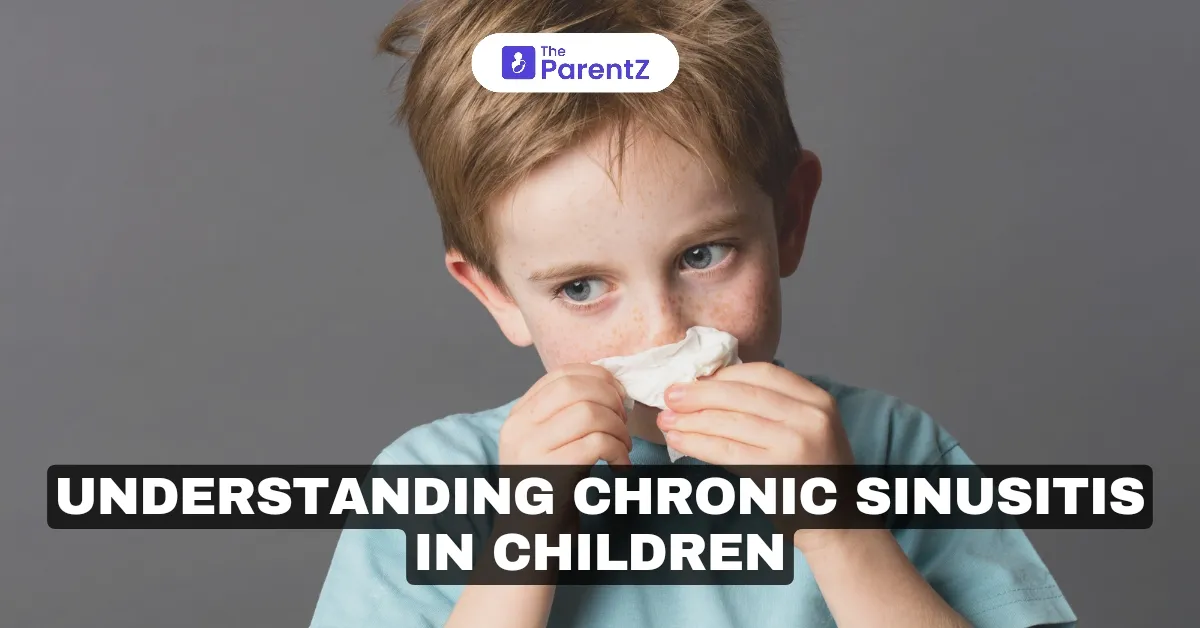Sinusitis refers to inflammation of the paranasal sinuses, which can result in significant discomfort and health complications if left untreated. In children, chronic sinusitis is characterized by symptoms persisting for more than 12 weeks, distinguishing it from acute or recurrent forms of the condition.
What is Sinusitis?
Sinusitis involves the inflammation of the mucosa lining the paranasal sinuses, often caused by infection, allergies, or other factors leading to obstruction of normal sinus drainage.
Chronic Sinusitis vs. Acute Sinusitis
Acute sinusitis typically lasts less than 4 weeks and is often caused by viral infections. Chronic sinusitis persists for 12 weeks or more and is associated with long-term inflammation, often resistant to standard treatments.
Incidence of Chronic Sinusitis in Children
The incidence of chronic sinusitis in children is relatively low compared to adults but still significant. Studies suggest that approximately 0.5% to 2% of pediatric patients develop chronic sinusitis, often secondary to underlying conditions such as allergic rhinitis or anatomical abnormalities.
Children at Risk of Chronic Sinusitis
Certain groups of children are at higher risk for developing chronic sinusitis, including:
1. Children with Allergies: Allergic rhinitis is a significant risk factor.
2. Immunocompromised Children: Reduced immunity increases susceptibility to infections.
3. Children with Anatomical Abnormalities: Deviated nasal septum or enlarged adenoids can obstruct sinus drainage.
4. Children with Cystic Fibrosis or Primary Ciliary Dyskinesia: These conditions impair normal mucus clearance.
5. Exposure to Environmental Irritants: Pollutants and secondhand smoke can predispose children to sinusitis.
Causes of Chronic Sinusitis in Children
1. Infections: Persistent bacterial infections are a common cause.
2. Allergies: Chronic exposure to allergens can lead to inflammation.
3. Environmental Factors: Pollution, humidity, and temperature changes may aggravate symptoms.
4. Structural Abnormalities: Deviated septum, nasal polyps, or adenoidal hypertrophy contribute to obstruction.
Age Factors in Chronic Sinusitis
Sinus development in children influences the prevalence of sinusitis at different ages:
• Ethmoid Sinuses: Present at birth and most commonly affected in infants.
• Maxillary Sinuses: Begin development at birth but are more susceptible in toddlers.
• Frontal and Sphenoid Sinuses: Develop later and are typically implicated in older children.
Prevention of Chronic Sinusitis
Preventive measures include:
1. Managing Allergies: Use antihistamines and avoid allergens.
2. Hygiene Practices: Encourage regular handwashing to prevent infections.
3. Avoiding Irritants: Minimize exposure to pollution and smoke.
4. Vaccinations: Ensure up-to-date immunizations, especially for influenza and pneumococcus.
5. Humidification: Use humidifiers to maintain optimal indoor air moisture.
Management and Treatment of Chronic Sinusitis
General Measures
• Hydration: Encourage fluid intake to thin mucus.
• Nasal Irrigation: Saline nasal sprays or rinses can aid in sinus drainage.
• Steam Inhalation: Helps in loosening mucus and relieving nasal congestion.
Pharmacological Management
1. Intranasal Corticosteroids: Reduce inflammation (e.g., mometasone or fluticasone).
2. Antibiotics: Long-term therapy may be necessary if bacterial infection is confirmed. Common choices include amoxicillin-clavulanate or cefdinir.
3. Antihistamines: Useful for children with coexisting allergies.
4. Decongestants: Short-term use to reduce nasal swelling.
5. Leukotriene Receptor Antagonists: Beneficial in children with allergic components (e.g., montelukast).
Surgical Interventions
For children who fail medical therapy, surgical options may be considered:
• Adenoidectomy: Removal of hypertrophied adenoids that obstruct drainage.
• Functional Endoscopic Sinus Surgery (FESS): Reserved for severe cases to restore sinus ventilation.
Conclusion
Chronic sinusitis in children can significantly impact their quality of life, causing persistent discomfort and health complications. Early diagnosis, preventive strategies, and timely intervention are essential for effective management. Collaboration among pediatricians, otolaryngologists, and allergists ensures comprehensive care tailored to each child’s needs.
By addressing risk factors and implementing appropriate treatments, chronic sinusitis can be managed effectively, allowing children to lead healthier, symptom-free lives.
References
• American Academy of Otolaryngology. Chronic Sinusitis: Diagnosis and Management.
• Wald ER. Sinusitis in children. N Engl J Med. 2018;378(12):1151-1158.
• National Institute on Deafness and Other Communication Disorders. Sinusitis in Children.
• Fokkens WJ, Lund VJ, Hopkins C, et al. European position paper on rhinosinusitis and nasal polyps 2020. Rhinology. 2020;58(S29):1-464.








Be the first one to comment on this story.